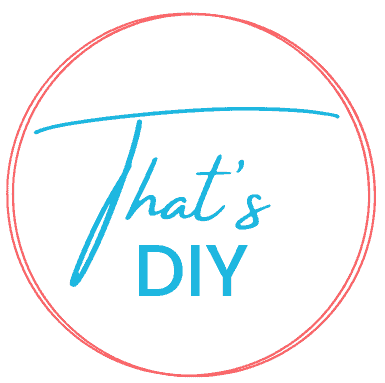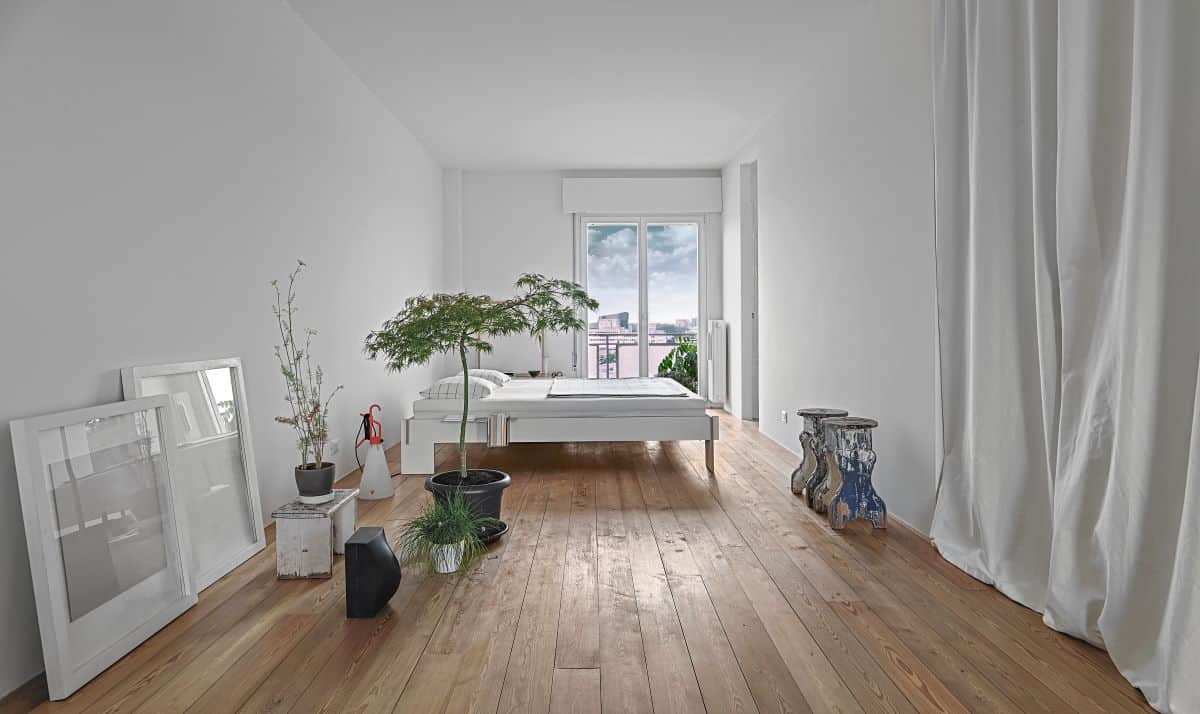How to Get Rid of Squeaking Wood Floors
Nobody likes a squeaky wooden floor. While a squeaky floor can ruin a serious romantic moment, it could also be a sign of an underlying problem that is causing structural damage to your home. While you can always call the professionals, there are some simple things that you can do at home to stop your wooden floor from squeaking.
So, how do you get rid of that annoying squeaking wooden floor? There are many ways to get rid of squeaking floors including using nails or shims to tighten the flooring, using roller wheels under your furniture, using a rug or padded floor covering, or using spray adhesive to fill in the gaps in your hardwood flooring.
By following the tips listed below, you should be able to get rid of those pesky squeaks and reclaim your smooth-walking space!
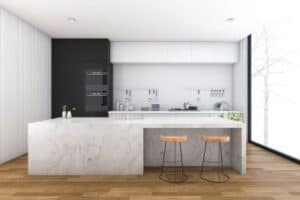
Why Your Hardwood Floor Is Squeaking
Before you can fix a squeaky wooden floor, you need to know why the floor is squeaking. Your floor could be making noise because it needs to be fixed; the nails that hold the boards together could be loose, or there may be a lot of humidity and moisture near your floor.
When there are gaps in between boards, they rub together when walked on or when any weight is put down on them.
This pressure causes the boards to flex which creates friction. The sound that you hear comes from this friction, which is often accompanied by tiny squeaks as the wood bends back and forth under pressure.
Although small gaps are normal, if you have large areas where two planks are not flush with one another or where several boards are sticking up slightly, there’s probably significant wear happening at these points.
Wooden floors become loose and squeaky over time. This means you should consider getting them redone before trying any of these tips. If your floor is already in good shape though, try the following tricks to banish those squeaks.
Tips For Silencing Your Squeaking Floor
For the most part, squeaks in hardwood floors are not a structural issue and can be fixed with a few common household items.
Loosen Up The Floor With A Squeak-Killing Glue
Apply a good amount of glue to the point where the boards meet. Insert the shims into the open space between boards. Make sure that all gaps are filled tightly with shim material. This will ensure that noise is eliminated from your wooden floor.
Remember to use screws when using plywood instead of shims since plywood expands when wet and may cause it to move out of place over time. If you already have a squeaking wood floor, you can prevent it from worsening by applying waterproof glue to the planks.
The moisture in the glue will fill up any spaces between boards and cause them to stick together heavily. This heavy pressure should stop them from moving so much, hopefully stopping your annoying squeak.
If none of these steps work for you then there may be something structural that’s causing the issue with your floors. The problem might be coming from where two pieces of plywood come together (i.e., under stairs or behind furniture), which means that only an expert service can fix it properly.
Shim Your Way To A Quieter Home
Insert thin wooden shims between crevices, being careful to pound them in all the way so that they do not fall out.
Run a thin bead of non-waterproof glue over the edge where the boards meet, and then place your shims into the opening. Finally, pound gently the shims into place with a rubber mallet, if needed.
Use A Nail To Silence The Noise
Do this when there is no moisture in the wooden planks. Push a small nail between two planks at either end of the squeak (if you cannot get to one end try from both).
Once it is inserted through, pull the plank away from the other board slightly. When done properly, you’ll see a slight gap between boards which will help eliminate any noise.
If nails will not work for your particular sport, consider using screws. Since screws are bigger than nails, they’re able to do the job even if the gap is larger. However, because of their size, you will need to drill holes first before screwing them into place.
A nail can help to temporarily silence squeaky floors by releasing pressure between floorboards. If your problem is coming from where two pieces of plywood meet, only an expert service can fix it properly.
Use Roller Wheels For Your Noise Issues
If squeaks are appearing around the perimeter of your home, you can get hardwood floor wheels to sit under your furniture.
This will stop it from making contact with the floor, which should silence any noise that’s being caused by friction between the piece of furniture and the floor itself.
Slip-On A Hardwood Floor Mat To Stop The Noise Before It Starts
Put a rubber mat down in any high traffic areas like doorways or near where people tend to congregate like next to couches or chairs.
If you have carpet, mop your floor with a damp cloth and then place the meat on top. This will create a similar cushioning effect as well as absorb any dirt that might be causing dust and grit to form between boards.
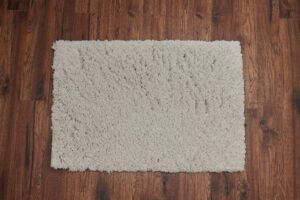
Get On The Low(er) End Of The Hammer
If you find that your weight is causing the squeaks, it’s likely because you’re applying too much force to your hardwood floor. Use a small hammer to lightly tap pressure points on the boards, causing them to come together tightly and thus removing any noise caused by lack of tightness between planks.
This works especially well if the problem area has an upward bend in it (i.e., where the wall meets wooden flooring).
Try Spray Adhesive To Fix Those Crevices
Spray adhesive into any gaps that are appearing between boards or around edges of stairs or hallways for a more permanent fix. What must always be kept in mind when acquiring such a spray adhesive is that it needs to match the specifications of that which has been used for the original wooden floor.
Many wooden floors are painted or polished with extremely smooth surfaces, and without matching this standard, even the best adhesive spray will show visible signs of degradation and make the flooring appear flawed.
It is vital that any adhesive used, whether it comes in a spray or some other format, matches the specifications of the original – only then will it prove to be effective.
When using this method, be sure to keep enough distance from the nozzle and place a small barrier between the entrance and exit of your staircases when spraying so that you do not cause any damage or warp your flooring.
Get Some Scissors And Snip Away
The best solution for short crevices is to use a sharp pair of scissors to cut grooves into both sides of the boards, making them stick together more tightly and eliminating the noise. If using this technique, be very careful not to cut yourself on any exposed nails or screws.
Another option is to purchase a small saw – everyone has an old hacksaw lying around somewhere, so use it on those smaller crevices to remove the gap entirely.
This is not an ideal solution in terms of causing damage to your floor or creating visible marks, but it will ensure that you’re able to fix those small crevices yourself and save money in the long run.
Do Not Let Your Wooden Flooring Run Amok With Clips And Magnets
Use small metal clips or magnets and place them against the floor and wall where they meet (usually at corners).
The squeak problem can be solved by either using small clips in between them to prevent the metal from touching or by simply placing magnets on one surface (wall for example) and then attaching a piece of magnet to the other (wooden floor for example).
When it does touch, the sound is not as loud and there also need not be as much pressure.
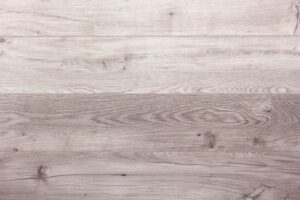
Consider Rubber Underlayment For A Quieter Home
If your house is particularly old, then it may be that you do not have any underlayment underneath your wooden flooring. This can cause creaks and groans to penetrate through the wood, making everything sound like it’s coming apart.
An excellent solution for this problem is to lay down rubber underlayment between planks of wood before they are nailed or glued together; most hardware stores will carry these materials which can help with noise control in your home.
In Conclusion
Unfortunately, there is not one universal fix for squeaky wooden floors. As with anything, some floors will squeak more than others depending on how heavy they are, where they’re positioned and how often they’re used.
That said, with some hands-on work and DIY techniques, you should be able to silence those annoying squeaks and get back to focusing on the benefits of having hardwood flooring: it is a classic look, durable build, and timeless beauty.
If your wooden floors do not seem to fit into any of these categories, rest assured that there are plenty more ways out there for you to find a permanent solution.
